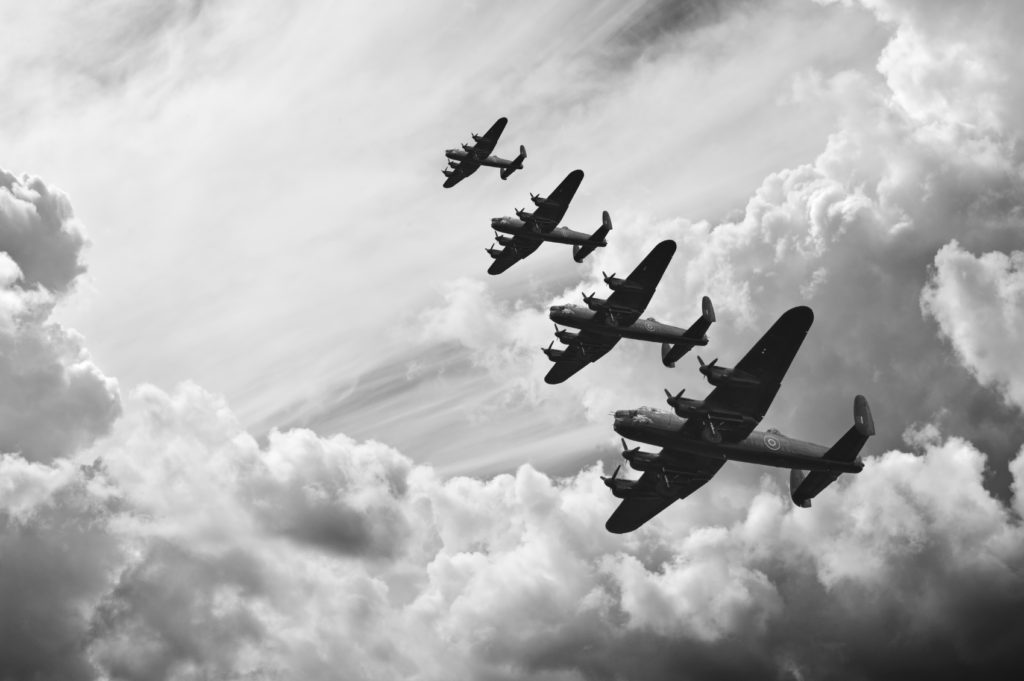Table of Contents
On the Home Front
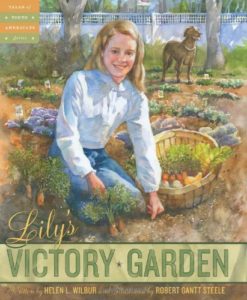 |
Lily of Helen L. Wilbur’s Lily’s Victory Garden (Sleeping Bear Press, 2010) gets permission to plant a victory garden in the yard of the Bishops’ house, the largest house in town – and by doing so eventually brings comfort to Mrs. Bishop, grieving for her son who has been killed in the war. For ages 6-9. |
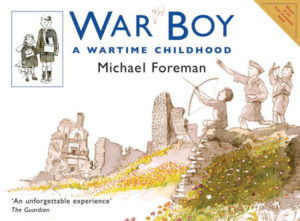 |
Michael Foreman’s War Boy: A Wartime Childhood (Pavilion, 2006) is a beautifully done picture-book memoir of Foreman’s childhood in a small town on the coast of England during World War II. For ages 7-9. |
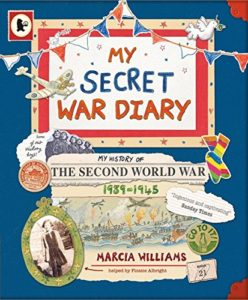 |
By Marcia Williams, My Secret War Diary by Flossie Albright (Candlewick, 2008) is the World War II diary of a young English girl, beginning in 1939, when Flossie is nine, and proceeding through 1945. It’s a beautifully designed collage-style book, filled with photos, postcards, letters in envelopes, and sketches. For ages 8-12.
|
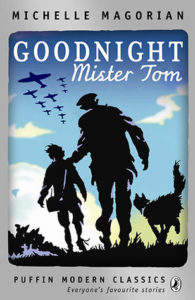 |
In Michelle Magorian’s Good Night, Mister Tom (HarperCollins, 1986), abused young Willie Beech is evacuated from London to the country, to stay with gruff Mr. Tom. When Willie’s mother demands him back again, Mr. Tom travels to London to save the boy he has come to love. For ages 9 and up.
|
|
The movie version, Good Night, Mister Tom (1998), is pretty much as good as the book. And I hardly ever say that. |
|
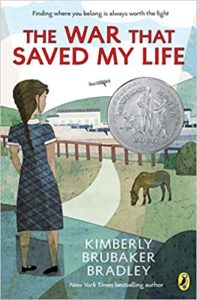 |
In Kimberly Brubaker Bradley’s The War that Saved My Life (Dial, 2015), ten-year-old Ada has never been allowed to leave their one-room apartment because her abusive mother is ashamed of her crippled foot. When her younger brother Jamie is evacuated from London during World War II, Ada manages to escape and go with him. Both children end up in the care of Susan Smith, who initially doesn’t want them – but gradually, as Ada learns to read and ride, all begin to trust and love. Also see the sequel, The War I Finally Won. For ages 9-12. |
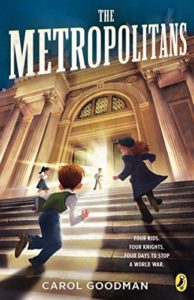 |
In Carol Goodman’s The Metropolitans (Puffin, 2018), four 13-year-olds meet at the Metropolitan Museum of Art shortly after the bombing of Pearl Harbor and are recruited by an eccentric curator to track down pages of the Kelmsbury Manuscript, an ancient book of Arthurian legends, said to hold the key to preventing a second attack on American soil. As the four pursue their quest, they find themselves more and more absorbed by the personas of Arthur, Guinevere, Morgan le Fay, and Lancelot. For ages 9-12. |
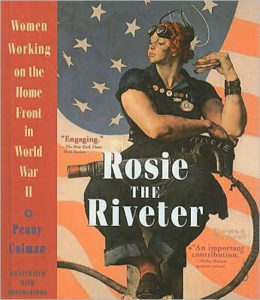 |
Penny Coleman’s award-winning Rosie the Riveter (Yearling, 1998) – subtitled “Women Working on the Home Front in World War II” – is packed with war history, details of life on the home front, and first-person accounts, spanning the period from the beginning of the war to the aftermath of peace. An engaging text illustrated with terrific period photographs for ages 10 and up.
|
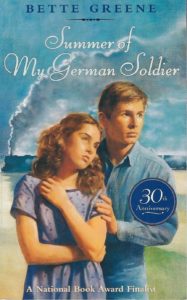 |
In Bette Greene’s Summer of My German Soldier (Puffin, 2006), 12-year-old Patty, who is Jewish, forms a bond with a German prisoner in a camp near her hometown in Arkansas. Patty is abused and criticized by her family; Anton helps her see that she is worthwhile. Issues of prejudice and injustice; a good discussion book for ages 10 and up.
|
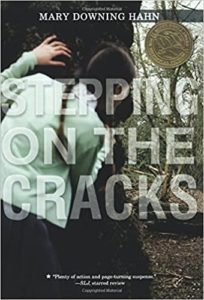 |
In Mary Downing Hahn’s Stepping on the Cracks (Houghton Mifflin Harcourt, 2009), it’s 1944 and both Margaret and Elizabeth have brothers who are fighting overseas. Then they discover that their arch-enemy, bully Gordy, is hiding his older brother, a deserter, in the nearby woods. There’s more to this than they realize. For ages 10-12.
|
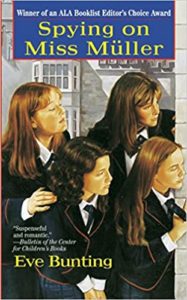 |
In Eve Bunting’s Spying on Miss Muller (Clarion, 1995), girls at an Irish boarding school become convinced that their German teacher, Miss Muller, is a spy, sending coded messages to the Nazis. For ages 10 and up.
|
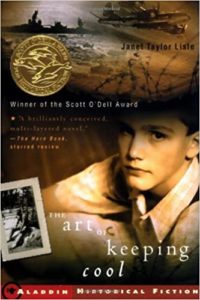 |
In janet Taylor Lisle’s The Art of Keeping Cool (Atheneum, 2002), Robert and his mother and sister have gone to live with his grandparents on the coast of Rhode Island, while Robert’s father is fighting in Europe. There the town turns against a German artist, whom they accuse of being a spy. For ages 12 and up. |
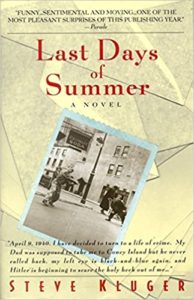 |
Set in Brooklyn in the 1940s, Steve Kluger’s Last Days of Summer (William Morrow, 2008) is funny, sad, uplifting, and a gem. The protagonist is twelve-year-old Joey Margolis, a brilliant loudmouth Jewish kid who is a victim of neighborhood bullies – in part because he has (a lie) boasted that he is a friend of Charlie Banks, a player for the New York Giants. Eventually, by dint of sheer persistence, he does become friends with Charlie, and it’s a wonderful, funny, and ultimately bittersweet relationship, when Charlie goes to war. The book is told entirely in letters, interviews, memos, newspaper clippings, and Top Secret messages between Joey and his best friend Craig Nakamura (a.k.a. The Green Hornet) who lives in the apartment downstairs. Highly recommended for teens and adults.
|
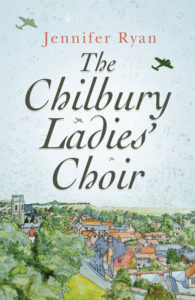 |
In Jennifer Ryan’s The Chilbury Ladies’ Choir (Ballantine, 2017), the men of Chilbury village have left for war, leaving the girls and women to cope on their own. The story is told in letters and journal entries through the various voices of 13-year-old Kitty, a hopeful singer with a crush on the local aristocrat’s son; her older sister, Vanessa; 10-year-old Sophie, a refugee; Mrs. Tilling, who finds that she’s far braver than she believed herself to be; and the notably awful midwife Edwina Paltry. War, solidarity, and hope. For teens and adults.
|
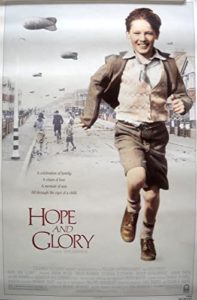 |
Hope and Glory (1987) is the story of a nine-year-old boy growing up in the London blitz. For Billy, the war is as much exciting as terrifying, and even a plus when Hitler blows up his school. Rated PG-13.
|
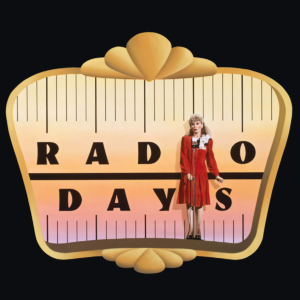 |
Woody Allen’s Radio Days (1987) is a story of the life of a working class family in Rockaway Beach, New York in 1942 during the golden days of radio, filled with wonderful characters, period music, and the looming threat of World War II. Rated PG.
|
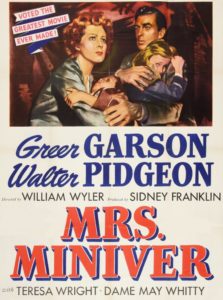 |
Mrs. Miniver (1942) is the story of a middle-class English family on the home front in a world at war, beginning in 1939. Oldest son Vin joins the RAF; the father, Clem, takes his boat across the Channel to help evacuate soldiers from Dunkirk; a wounded German pilot is found hiding in their garden. During bombing raids, they hid in an Anderson shelter and read Alice in Wonderland. Not rated.
|
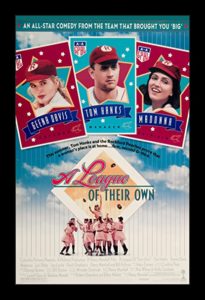 |
In A League of Their Own (1992), set during World War II, with the men away at war, women not only take over their vacant jobs – and even form the first female professional baseball team. Rated PG.
|
